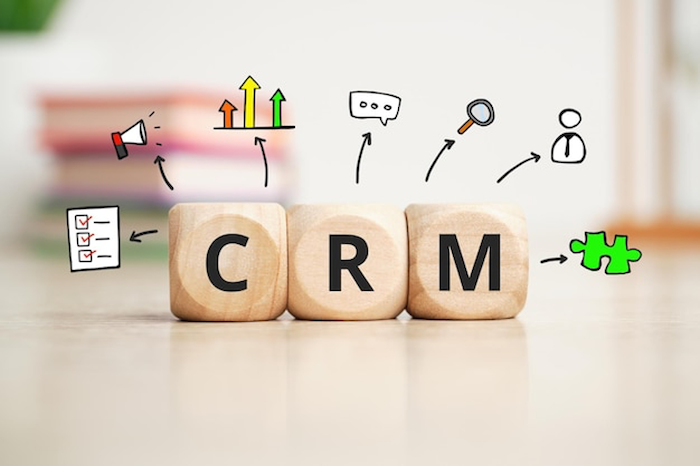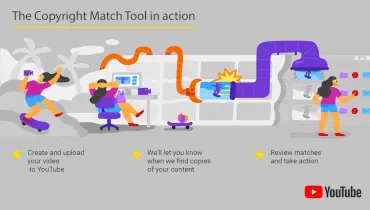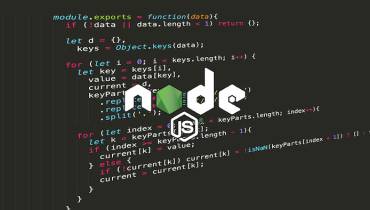How to Use CRM Data to Build Better Customer Journeys Maps

Marketers give prime importance to customer journeys maps because they outline and help to understand the roadmap of a customer, from the very first touchpoint throughout to their conversion and end of relationship with a business.
Customer journeys maps assist businesses and marketers in decision-making, show customer buying behavior, and often highlight opportunities for improvement. Thus, mapping of customer journey plays a vital role in business success.
However, creating a single map for every customer journey can be difficult, especially considering that businesses are today adopting an omnichannel marketing approach.
Along the customer journey, some consumers prefer face-to-face communication, while others feel comfortable in non-verbal communication methods before converting.
Similarly, other consumers along the customer journey are comfortable revealing what they honestly feel about a product or service, while others do not give feedback easily.
In that regard, no single map can ever define the full range of customer journeys, which can be an issue. To solve the issue, many companies are developing their own customer journey maps using Customer Relationship Management(CRM) data as a base for the maps.
CRM Data As a Base for Customer Journey Maps
CRM software are designed to accurately track contacts and nurture them to build customer loyalty and repeat sales. These systems can collect a wide range of customer data ranging from simple things like the customer’s name when they contact the business to intricate details like the customer’s history with the business, past purchases, and buying behaviors and timelines.
That data gives you an even more complete view of customers and their behaviors, enabling you to deliver even more personalized services, anticipate actions, and improve shortcoming identified along the customer journey to make future engagements even better.
With CRM data, marketers no longer have to guess how, where, when, and through which medium messages are delivered to customers; it can be figured out precisely based on data from your CRM. And with access to CRM data, marketers can more accurately map customer journeys to better understand the customer roadmap and offer more personalized experiences across all touchpoints and channels—for every individual.
But how do you integrate CRM data to you customer journey maps?
5 Ways to Integrate CRM Data When Creating Customer Journey Maps

Here’s how you can use your CRM data to create customer journey maps:
1. Define Your Ideal Customer Profiles (ICPs)
You can never develop a useful journey map if you are unable to define an Ideal Consumer Profile (ICP).
ICP has everything that you want to see in your loyal consumer. This profile will work as a baseline for creating a map.
You can create an ICP by focusing on the following points:
- What will be the ideal industry in which you want to sell your product?
- Which niche under this industry is most preferable?
- What type of people of this niche are you looking for?
- What should be their average income?
When developing ICPs, take data from a CRM. Check out sales data and infer who can become a loyal client. Based on these results, you can develop an ideal profile.
2. Understand Consumer Behaviour
Once you have created an ICP drawn from consumer data, the next step is to go deeper into your CRM data. This time you need to check the behavior of existing customers.
For instance, if you use a CRM for real estate, your clients can belong to categories like small families, big families, commercial purposes, etc. Notice what do they have in common? Which action do they all take before finalizing a deal, or which common questions do they ask?
This information will help you in extracting more ideas for creating an exact picture of the ideal customers. Since consumer behavior changes at a rapid rate, it is important to consider both former and present consumer patterns.
Additionally, understanding customer behavior can help you improve. For instance, if you notice each of the consumers asks about documentation requirements before signing an agreement, you can add a page to your website that information. This page can explain in detail which documents are needed for which property.
3. Check Lead Scoring
Lead scoring refers to assigned points of each lead you generate for the business. It alludes to checking the lead profiles for a similar journey and ranking prospects based on the perceived value each lead represents. This helps you know the profiles that are most likely to convert.
Since businesses cannot afford to spend time, effort, and money on every potential client, they need to find the ones that are most likely to convert and closest to conversion. These profiles with a high probability of converting are also called hot deals.
Many CRMs offer an in-built lead scoring system. However, if your CRM does not have this feature, you can have it as an add-on. Since CRM is a hub of all contact profiles, conducting the lead scoring process becomes easier.
You can check the following points to identify similarities in the consumer journey:
- Same page visits or download of similar content
- Similar queries or interactions from start to end
- Similar amount of time spent with the business
- Same buying behavior and personas.
Once you are done with lead scoring, then you can put your marketing efforts in the right direction so that you do not waste time on those with the lowest probability of conversion.
4. Personalize for the Hottest Deals
After you have created an ideal profile of customers and also marked the ones that fall under the ‘hot deals’ category (prospects most likely to convert), now the next key step begins, which is personalizing your marketing for these sorted out profiles.
Here, a CRM comes in handy to track customers’ actions. Once they have taken the desired action, you can send a personalized message for engagement. For instance, a hot profile visited your psychotherapy sessions website, checked out the available slots, but did not return. In this scenario, you can send a follow-up email with more info and guidance about booking. You can also offer the option of urgent appointments if you give this service.
It’s difficult to track each customer profile manually, but a CRM system works efficiently in notifying you about specific consumer actions. It’s a useful tool for boosting marketing efforts.
5. Create Your Customer Journey Map
Finally, it is time to create you customer journey map based on all of that CRM data. This will provide a clear illustration of your customer interactions and experience with your company.
There is no fixed formula for creating customer journey maps and no rules about what exactly a clear visualization of customer interactions has to look like. It can be a grid, a table, an infographic, or something else. But, a good customer journey map is a digram that provides a clear visualization of customer interactions and touchpoints, including customer sentiments, pathways, pain points, and actions plotted in sequential order.
Pick any customer journey map format that suits your business. For example, you can use a grid layout to create your map. In this case, consider the grids we find in maps. Here, you can use the horizontal axis of the graph to define various stages of the consumer journey like pre-awareness, website visit, satisfied consumer, etc. The vertical axis can define the feelings and objectives of consumers like happy consumers, doubtfulness, etc.
You can design one map for each customer persona illustrating all interactions. If a few of the maps are highly similar, you can combine them later. Your customer journey maps will help you see areas you can improve and implement better marketing strategies.
Keep in mind that the customer journey map format you choose and present to stakeholders may be quite different from the format you show executives fixated on the business’s bottom line. For stakeholders, it may be a simple infographic or large poster meant to help staff and clients visualize the different stages of the customer’ path to conversion.
Either way, without these maps you may not know the right direction to take for your marketing, personalization, and sales optimization efforts.






















